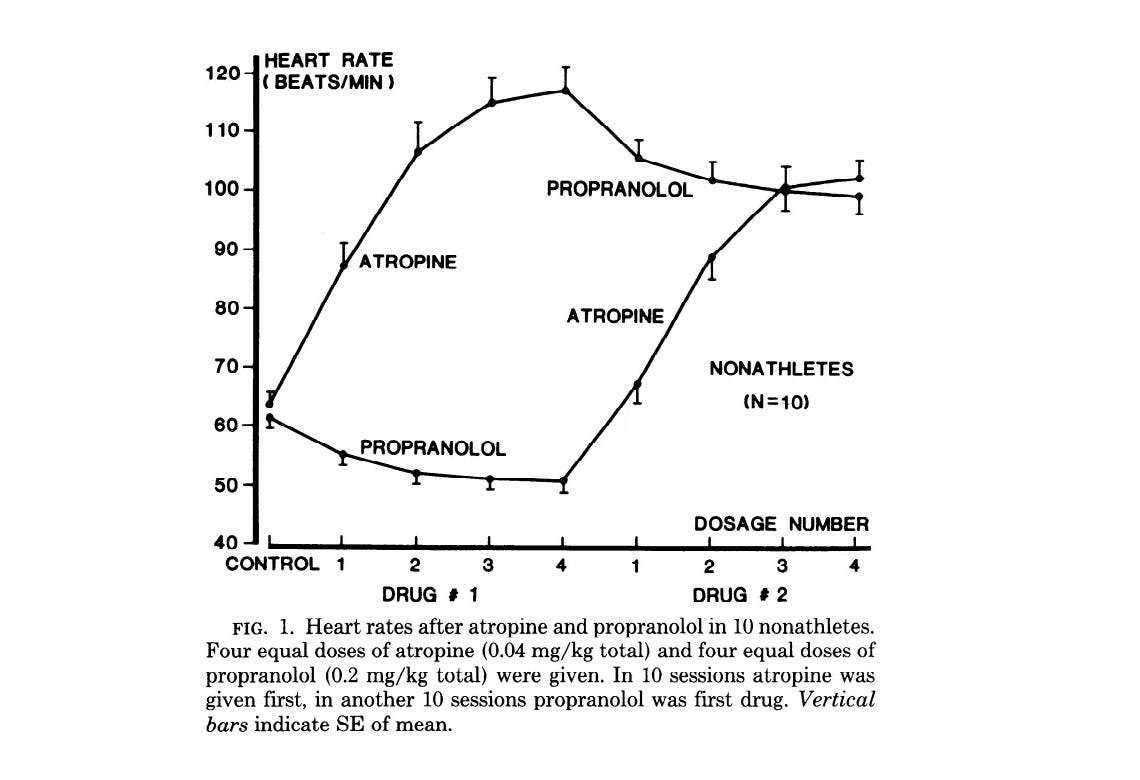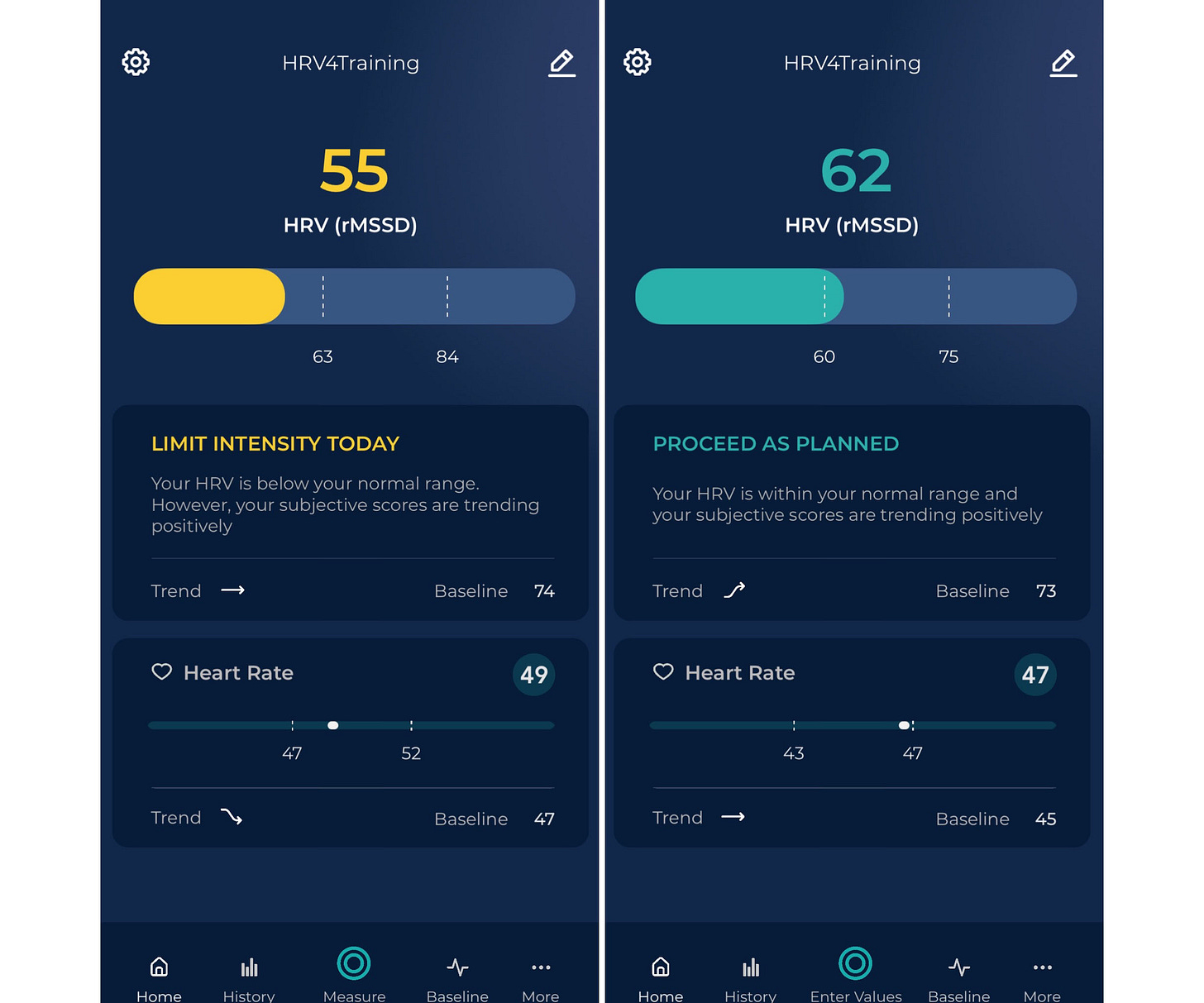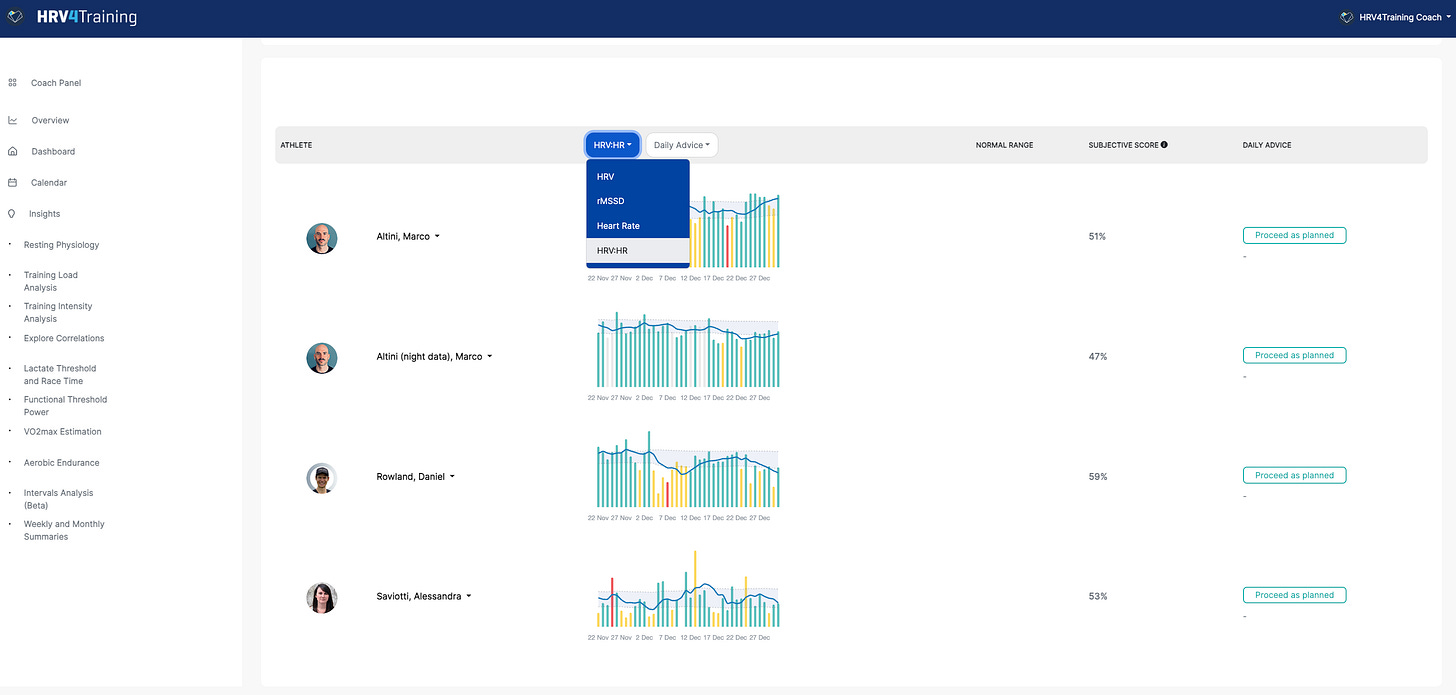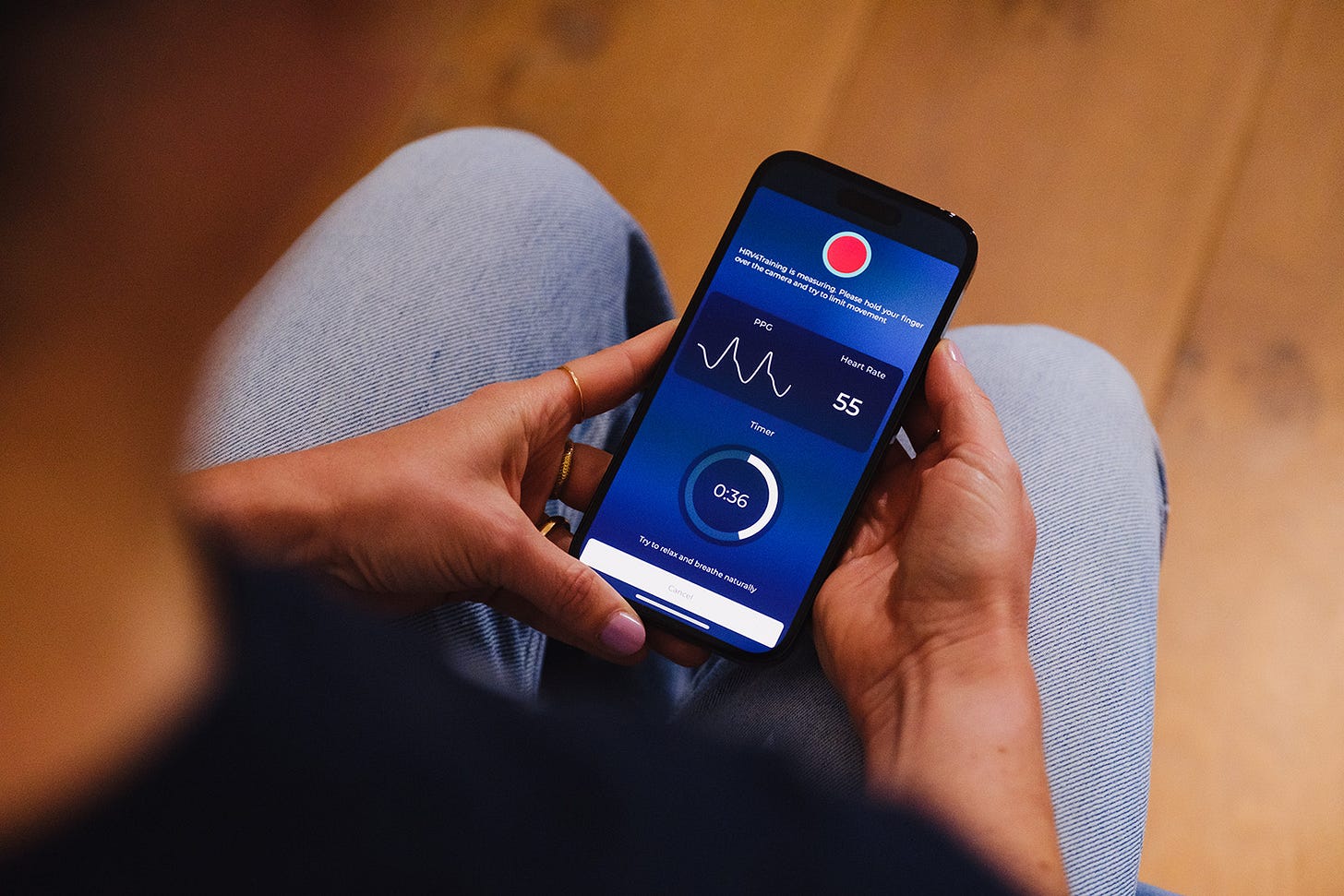Recent articles and updates [January 2025]
Heart rate variability, wearables, entrepreneurship, training talk and some ramblings
hi there 👋
I hope all is well.
Here is my first newsletter of the year, including articles and updates from this past month.
Below you’ll find links to articles covering the physiology of HRV, the impact of caloric deficit and macronutrient intake on HRV, the latest research on HRV-guided training, experimenting with periodized nutrition for endurance performance, training periodization, and more.
I hope you’ll find the articles useful and I would like to take the opportunity to thank you for your support.
Please feel free to comment below or in the articles should you have any questions, and I will follow up soon.
Take care!
Heart rate variability (HRV) 🫀
The Physiology of Resting Heart Rate and Heart Rate Variability (HRV). In this blog I cover the main differences between resting heart rate and heart rate variability (HRV), and why we consider HRV a marker of parasympathetic activity and therefore of your stress response when measured under certain conditions. Full article, here.
On Heart Rate Variability (HRV), Weight Loss and Low-Carb Intake. As you might know already, I’ve been experimenting more with periodized nutrition for endurance performance. As a result, I’ve collected some interesting resting physiology data in the last month, highlighting once again differences between resting heart rate and HRV - as well as possible misconceptions about HRV. Check it out, here.
[Q&A] Could I get more accurate HRV data using a chest strap? I have received this question a few times recently, hence this short blog.

Research 📝
HRV-guided training. A recent scientific paper looks at HRV-guided training, showcasing the practical application of what I have built over the years: using morning HRV data to successfully adapt training loads based on deviations from your own normal range. The results—greater aerobic gains, lower strain, and reduced variability in responses—highlight the effectiveness of this approach. Note that all of this is obtained with morning measurements of resting physiology, without the need to wear anything 24/7. Learn more about the study and how you can use the same approach, here.

Podcasts 🎙️
Beyond the hype: how can HRV actually be useful? A few weeks ago I had a chat with Bruna and Fabi Maia about all things heart rate variability (HRV) and wearables. You can find the link here.
In this episode, Marco breaks down the science of heart rate variability into practical insights you can use today. He shares eye-opening insights about how your training decisions should (and shouldn't) be influenced by HRV. We also discuss the real usefulness of wearables and explore often-overlooked factors that impact HRV measurements, from sleep quality to hormonal changes across the menstrual cycle.
Building 🛠️
Normalized HRV in HRV4Training Pro. A few weeks ago I wrote a blog about Normalized HRV, introducing a new feature I have released in HRV4Training Pro, where you can look at your HRV normalized by your resting heart rate. You can now select Normalized HRV as well (HRV:HR) in the Coach Panel of HRV4Training Pro, so that you can keep track of this parameter for your athletes. Normalized HRV might be a better way to capture an athlete’s response, as it accounts for how changes in resting heart rate impact HRV. For example, it is normal for HRV to be more elevated if heart rate is suppressed, but a normal HRV with a suppressed heart rate might actually signal that HRV is not where it should be. Try it here.

You can now monitor your athletes’ normalized HRV in HRV4Training Pro, check it out at this link. I hope you will find this update useful.
Training Talk 🏃🏻♂️🚴
Experimenting with Periodized Nutrition for Endurance Performance. I started “a little” experiment last month, changing my diet to a lower-carb one, with two goals in mind: Lose some weight (limited to an initial phase that will last maybe 2 months or a little longer) and improve endurance performance in long events (8-10 hours). In this blog, I discuss substrate utilization and periodized nutrition and how this fits with my individual physiology and limiters. Learn more, here.
Training log. As the name states, this is just my new training diary for 2025.
CoachCorner ⏱️
How I Prescribe Training: Periodization and Training Phases. CoachCorner is a new series of blogs in which I share information that is mostly relevant to the runners I coach. The second blog is about training Periodization and Training Phases, and defining a common language. Check it out, here.
Ramblings 🤌
It was a nice surprise to read a few kind words about my work on heart rate variability (HRV) from Steve House at the UphillAthlete, author of one of my favorite endurance training books (which I’d highly recommend: Training for the Uphill Athlete: A Manual for Mountain Runners and Ski Mountaineers - written with Kílian Jornet and Scott Johnston). Here is the article, written with Chantelle Robitaille. Thank you!
First signs of a positive adaptation after two weeks of periodized (and reduced) carb intake, in my Normalized HRV. This comes after an initial overshoot in HRV which is typical of reduced caloric intake and a caloric deficit. In that initial phase, I had not changed diet, but simply reduced overall intake by about 1000 kcal/day. The change in macronutrients intake then led to a large reduction in normalized HRV, which only now is rebounding. Data here.
If you still had doubts about how bad wearables are at continuous HRV data, and how much they are fooling you with 24/7 “stress estimates”, a recent paper looking at raw data from one of the major manufacturers shows that about 80% of the data collected is garbage. No surprise none of this raw data is shown to you. See here.
That’s a wrap for this month.
Thank you for reading, and see you next month!
Recent newsletters:
Marco holds a PhD cum laude in applied machine learning, a M.Sc. cum laude in computer science engineering, and a M.Sc. cum laude in human movement sciences and high-performance coaching.
He has published more than 50 papers and patents at the intersection between physiology, health, technology, and human performance.
He is co-founder of HRV4Training, advisor at Oura, guest lecturer at VU Amsterdam, and editor for IEEE Pervasive Computing Magazine. He loves running.
Social:









So I just came back from Europe where I skied in a long race. Major jet lag. Probably overtraining too. I cannot seem to get my resting heart rate back to where I was before I left on the trip. I have been in recovery mode for days. Any thoughts, recommendations? Thanks.
thanks for the article- i am trying to learn as much as possible about factors that affect HRV. i have afib and had ablation surgery in november to correct it- long story short, my afib episodes have pretty much been eliminated after a few weeks; however, my HRV has plummeted (it used to be in the 40s-50s to now in the teens!). am wondering if this is something i should be worried about? i use a whoop strap and apple watch to measure my HRV and both have gotten similar readings.